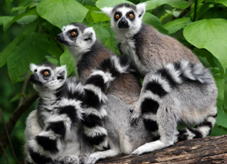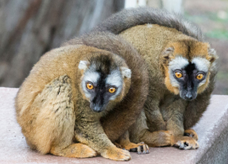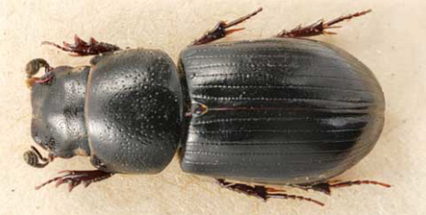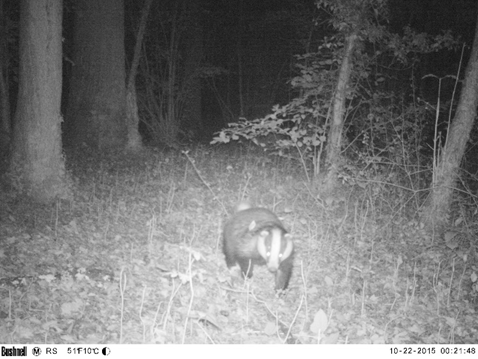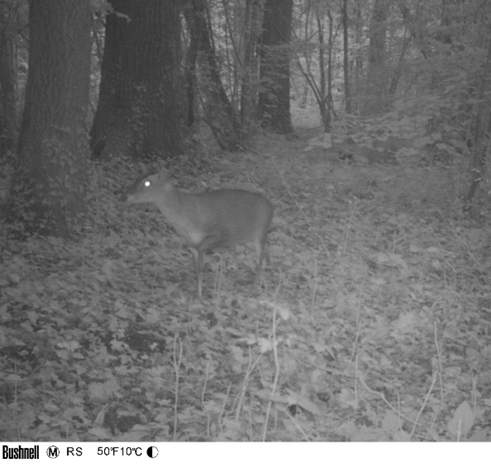Phew, we have made it to the half-way point! These past few months have been a whirlwind of assessments, revision and deadlines but we have all come out the other side unscathed and have learnt a lot from our experiences so far! Here is a brief outline of some of the things we have been up to in recent months…
After our incredible trip to Kenya, we had to start preparing ourselves for the last part of semester one as numerous assessment deadlines were fast approaching. First we got the chance to do a short presentation to Dr Judith Lock (MRes Wildlife Conservation Programme Leader) and the rest of our peers during one of our weekly tutorials at The University of Southampton. This gave us the opportunity to critically evaluate each others’ presentations which helped us to prepare for the imminent group and individual assessed presentations. The group presentation focused on evaluating the different survey methods and field techniques that we had practiced during our fieldwork to Kenya including foal patrols, vegetation monitoring and distance sampling. It was great to re-visit all of the work and new skills we had practiced in Kenya and being able to work in pairs for our first assessment helped to calm some of the nerves! Next we had to give our individual presentations to the Conservation Biology team at Marwell Wildlife and Centre for Biological Sciences Research Faculty at The University of Southampton. The presentations covered a diverse range of topics including re-wilding in Chernobyl and emerging infectious diseases in bats. Although daunting, this assignment was useful training for our research vivas that will happen at the end of the course and a great chance to improve on presentation style and delivery skills.
Just before the Christmas holidays a number of us made a break to London to attend the ASAB Winter Conference on Social Learning and Culture. For some of us this was our first conference experience and first visit to ZSL London Zoo. The first day of the conference was entirely focused on primates; one talk which we all found particularly engaging was for a project comparing social learning between egalitarian and despotic social structures. They compared two lemur species, the red-fronted lemur which live in an egalitarian society and the ring-tailed lemur which have totalitarian female leaders and a stricter hierarchy. The second day encompassed much more diversity from drosophila to whales! One study showed that sperm whale clans had variation in codas, which are social communication sounds. The low genetic diversity between clans suggested that the animals learnt these dialects.
- Ring-tailed Lemur (Lemur catta) http://cincinnatizoo.org/wp-content/uploads/2011/02/ring-tailed-lemur.jpg
- Red-fronted Lemur (Eulemur rufifrons) http://www.sfzoo.org/explore/animals/mammals/redFrontedLemur.htm
Upon returning after the Christmas holidays we dived into the world of the Beaulieu Dung Beetle, a species endemic to the New Forest, Hampshire for our third and final statistics assignment. This involved writing a grant proposal for further research into the environmental, physical and social drivers of Beaulieu Dung Beetle population dynamics using results from a pilot study.
- Beaulieu Dung Beetle (Aphodius niger) http://piclib.nhm.ac.uk/results.asp?image=047078
Next we were faced with the competency test, which challenged our knowledge of equipment including camera traps, binoculars and GPS units. The competency test came at the perfect time, as we had had plenty of practice with the equipment during our fieldwork in Kenya and in the ancient woodlands surrounding Marwell Wildlife. Now we know the devices inside out we just have to choose which to use for our research projects.
- Badger (Meles meles) captured on a camera trap in ancient woodlands surrounding Marwell Wildlife.
- Muntjac (Muntiacus reevesi) captured on a camera trap in ancient woodland surrounding Marwell Wildlife.
- Practising using GPS units around ancient woodland surrounding Marwell Wildlife.
To wrap up the intense exam period we finished with a 2 hour exam on the varied topics we had learned throughout the semester ranging from genetic population management to habitat restoration. We are all hoping that our hard work over the past few months has paid off and are keen to start our research projects! Our first challenge was to write a 4,000 word research proposal detailing the rationale, aims, experimental design, budget and timetable for our individual research projects.
Regular attendance at The University of Southampton’s Conservation Club has been very enriching involving many interesting talks from Asiatic Lion conservation in Gujarat to Horizon scanning and Natural greenspace strategies for UK Sites of Importance for Nature Conservation (SINCs), Special Protection Areas (SPAs) and Special Areas of Conservation (SACs). It has been really helpful and a great opportunity to engage with lecturers, researchers and PhD students within the faculty as well as keeping up to date with current conservation research affairs. We hope to be able to present our project proposals to Conservation Club in the coming weeks to gain constructive feedback and advice that will help us with our presentation skills as well as with the statistics, data collection methods and implementation of our projects. We have also been frequently attending The University of Southampton’s Environmental Bioscience Seminars that have been on topics as far-reaching as crocodile conservation in Madagascar; vertebrate and invertebrate pollinators; and most recently a talk on the Origin of Species on Darwin Day.
During semester one we have all gained a wealth of skills, knowledge and experience in the principles and disciplines of wildlife conservation, statistical analysis, mapping techniques with GIS, proposal writing, project planning and practical monitoring techniques. We are all looking forward to putting these abilities into practice as we embark on our independent research projects. Some of us will be jetting off to sunnier climates including Kenya and Zimbabwe over the coming weeks whilst others will be hard at work here in the UK. We are all raring to go with the next stage of the course and so we wish everyone safe travels and best of luck with their research!
Written by Flàvia Trigo, Clemmie McAteer, Rosie Livingstone, Tessa Chesonis, Alex Phillips and Sushmitha Vandana Gopal.
Posted By : Danielle Free
